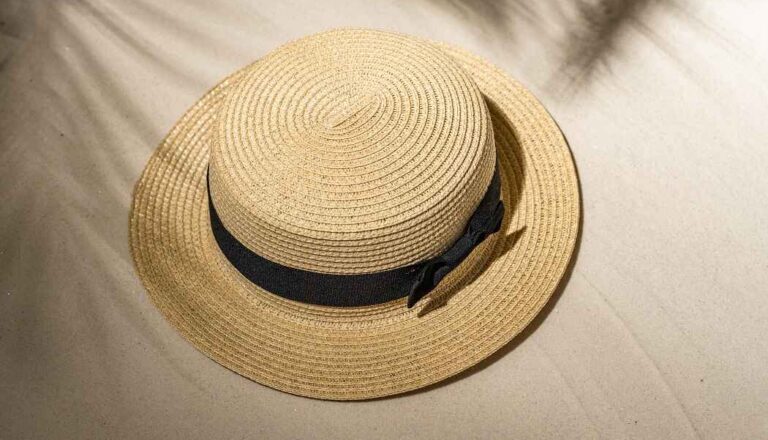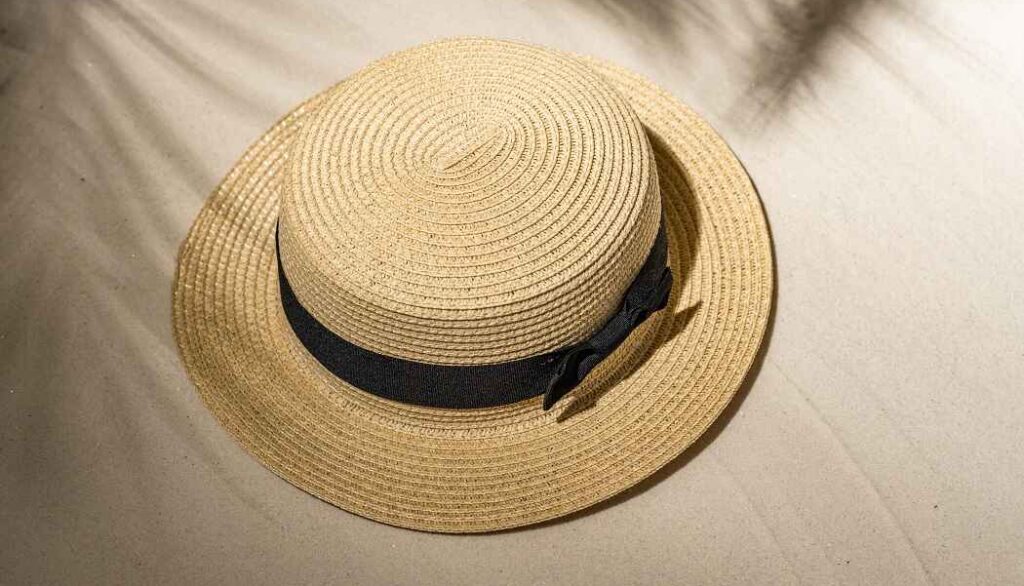
Can You Spray Paint a Straw Hat? [A Guide to Paint]
Spray painting a straw hat can benefit you in several ways. So, you can do it without any hesitation.
Painting item like hat is not a quite easy task. If you fail to do it properly, you can simply damage your hat. Therefore, it’s important to know how to paint a straw hat.

Well, we’ll discuss all these relevant things in this guide. You’ll know the benefits and drawbacks as well of painting your straw hat and all other things that will help you to make a right decision.
Can You Spray Paint a Straw Hat?
Yes, you can spray paint your straw hat. Spray painting a straw hat allows you to customize and transform its appearance according to your preferences. By using spray paint, you can achieve various effects such as solid colors, gradients, or even intricate designs. This opens up a wide range of creative possibilities to make your straw hat personalized.
One of the key benefits of spray painting a straw hat is the ability to revitalize an old or worn-out hat. If your straw hat has lost its original vibrancy, spray painting can give it a fresh and vibrant look. It allows you to breathe new life into your hat. Spray painting makes it stylish and eye-catching once again.
Additionally, spray painting provides a protective layer to the straw hat’s surface. It can help extend its lifespan. The paint acts as a barrier. It will shield the hat from potential damage caused by exposure to many external elements. It can also make the hat more resistant to stains and fading over time.
When spray painting a straw hat, it’s essential to choose the right type of paint. Look for particular paints designed for use on natural fibers like straw. These paints are typically flexible, breathable, and durable. Ensure that they adhere well to the straw material and withstand regular use.
Is It Safe to Spray Paint a Hat?
By taking necessary precautions, spray painting a hat can be a safe and enjoyable project.
Of course, proper ventilation is a must during the painting process. Spray paint fumes can be harmful when inhaled. So, choose a well-ventilated area or outdoors to do this task. It ensures proper airflow and prevents the inhalation of harmful chemicals.
Wearing a mask or respirator can also provide additional protection. Additionally, it is advisable to protect your skin and eyes by wearing gloves and safety goggles.
There are a few risks to be aware of when spray painting a hat. Improper use of spray paint can lead to overexposure to toxic chemicals. It may cause respiratory problems, skin irritation, or allergic reactions.
Check How to Spray Paint a Straw Hat:
How to Paint a Straw Hat?
No matter what’s the reason you want to paint your straw hat. But you must be cautious to follow a proper guideline. Check this guide for a satisfying result.
Materials you need:
- Straw hat
- Fabric paints
- Paintbrushes
- Palette
- Water
- Paper towels
Step 1: Prepare your work area
Choose a well-ventilated space with a flat surface to work on. Cover the surface with newspapers or a plastic sheet to protect it from paint spills.
Step 2: Clean the hat
Use a soft brush or cloth to remove any debris from the hat. This will ensure a smooth painting surface.
Step 3: Plan your design
Decide on the design you want to paint on your straw hat. You can draw your design on a piece of paper first to have a visual reference.
Step 4: Mix your paints (if necessary)
If you want to create specific colors, mix the acrylic paints on your palette until you achieve the desired shades. If you’re using fabric paints, they are usually ready to use out of the bottle.
Step 5: Start painting
Dip your paintbrush into the desired color and start applying it to the hat. Use smooth brushstrokes. If you’re working with multiple colors, start with the base color. Let it dry before adding additional colors.
Step 6: Allow the paint to dry
Give your painted hat sufficient time to dry completely. This may take a few hours, depending on the type of paint used. Refer to the instructions on the paint’s packaging for this.
Once the paint is dry, your painted straw hat is ready to be worn or displayed!
Check This Video:
What Paint Can I Use on a Straw Hat?
One suitable option for painting a straw hat is acrylic paint. Acrylic paint is known for its versatility and strong adhesion properties. It’s an excellent choice for painting on various surfaces, including straw.
Another option is fabric paint. This is amazing when working on straw hat. So, you can choose any of these paints.
Acrylic paint dries quickly and forms a water-resistant and flexible coating. This type of paint offers good coverage and excellent color retention over time. Acrylic paint allows you to unleash your creativity and achieve the desired look for your straw hat.
Can You Change the Color of a Straw Hat?
Yes, it is possible to change the color of a straw hat. The process of changing the color of a straw hat typically involves dyeing or painting it.
If you want to dye a straw hat, you can use fabric dyes or natural dyes that are suitable for straw materials. For dyeing, you need just a liquid dye in the color you want, a color fixative (to make the color stay), and latex gloves.
To dye a straw hat, clean it first. Prepare the dye by mixing fabric or natural dyes with water and a color fixative. Wear gloves and fully submerge the hat in the dye, leaving it for the recommended time. Rinse gently, then allow it dry.
Alternatively, you can also paint a straw hat using fabric paints or acrylic paints. Simply choose the desired color and apply the paint evenly on the hat’s surface. Allow the paint to dried out according to the product’s instructions.
And voila! Your straw hat now has a brand-new color.
How Do You Preserve a Painted Straw Hat?
To preserve a newly painted straw hat –
- Handle it with care. Avoid any rough handling or bending that could cause damage.
- Clean the hat by gently brushing off dirt and dust with a soft brush or cloth. Don’t use water.
- Protect the hat from moisture and humidity. Keep it away from rain or excessive sweating.
- Shield it from harsh sunlight to prevent fading and weakening of the straw.
- Avoid placing anything on top of the hat to prevent deformities.
Can I Wet My Straw Hat?
No, it’s not a good idea to wet a straw hat. Straw hats are typically made from natural materials such as straw or reeds. These materials can lose their shape, warp, or become misshapen when exposed to water.
Wetting a straw hat can cause it to shrink, stretch, or develop stains and mold. It is best to avoid getting a straw hat wet.
How Long Will a Straw Hat Last?
The longevity of a straw hat largely depends on the quality of craftsmanship and how it is cared for. A meticulously crafted and well-maintained straw hat can endure for several years, potentially even up to five years.
However, factors like frequent exposure to moisture and rough handling can accelerate wear and tear. To maximize its lifespan, store the hat in a dry place, shield it from extreme conditions.
Can Straw Hat Be Ironed?
Straw hats can be easily damaged by heat. Ironing can cause the straw fibers to become brittle. If your straw hat has become misshapen, it’s better to try reshaping it by using steam or water. You can also consult a professional hat cleaner for advice.
Still, if you decide to use an iron on a straw hat, proceed with caution. Set the iron to low heat. Cover the hat with a damp cloth, gently press without sliding. Allow the hat to cool and dry thoroughly.
The Bottom Line
Spray painting a straw hat can have several effects. The paint may not adhere well to the straw surface. Moreover, the paint may seep into the straw, potentially causing it to become stiff. Additionally, the added weight of the paint may change the hat’s structure and fit. After painting, it can be uncomfortable to wear.
However, if you need to paint your straw hat, consider using fabric dyes or fabric-safe paints. These options are generally more suitable for straw hats as they allow for better color absorption and flexibility.
